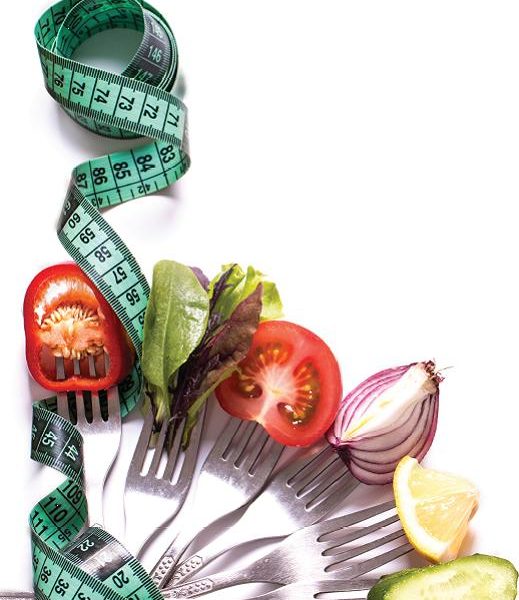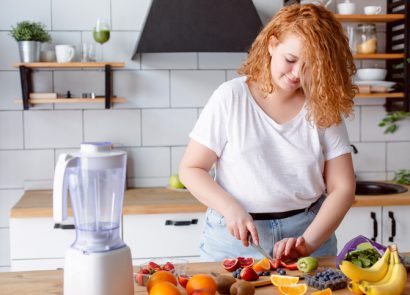Nutritionists have recently hailed the need for good fats in our diet (which ignited our love affair with superfood avocado). Whilst Jamie Oliver has long been pushing the nation to eat their five portions of fruit and vegetables each day. But how many of us actively seek to consume 30g of fibre?
Fibre is an important part of a balanced diet and comes packed with health benefits. Helping to ward off heart disease, diabetes and maybe even some types of cancer. It is also fundamental for a healthy digestive system. This vital carbohydrate is found in plant foods. For example fruits, vegetables and whole grains. Often, it is overlooked during meal times. But could your 30g daily allowance help you to stay trim?
The benefits
It’s been common to link this nutrient to weight loss. A recent study found that those who ate their daily allowance of fibre but didn’t change their other eating habits lost almost as much weight as those who followed a heart-healthy, low-fat diet plan recommended by the American Heart Association. This study adds to a growing body of evidence that those who tend to eat more fibre have a healthier body weight. But before you start celebrating its magical fat-burning properties you should know that the nutrient doesn’t melt excess lbs away by itself. Its trick is that it satisfies hunger for an extended period of time, without consuming ample calories.
The types
Essentially, fibre aids digestion and leaves you feeling fuller for longer. There are two different types: that which is soluble and that which is insoluble. Insoluble fibre ensures the digestive system runs smoothly. Whereas soluble fibre is praised for controlling weight and our calorie consumption. “Foods containing soluble fibre can lead us to eat fewer calories,” nutritionist Amanda Hamilton (amandahamilton.com) explains. “Think of soluble fibre like a sponge. If you put water on it, it expands to nearly double the size. Therefore eating fibre-rich foods leaves you feeling fuller for longer as it soaks up liquid during the digestion process. Eat bulky to stay slim,” she concludes.
Soluble fibre also helps to balance your blood sugar levels which ensures your body is less likely to store fat. “Soluble fibre slows the emptying of the stomach’s contents into the intestines, meaning that carbohydrates and sugars from our foods (natural or otherwise) are absorbed more slowly, balancing blood sugar and energy levels as well as our appetite,” explains Henrietta Norton, nutritional therapist and co-founder of foodgrown supplement brand Wild Nutrition (wildnutrition.com). “This is why eating whole fruit is better for us than drinking fruit juice because the fibre in the whole fruit slows down the absorption of the sugars.”
As well as keeping our weight in check, it also helps to control cholesterol levels. “Soluble fibre helps bind cholesterol in the gut and ensures it is efficiently excreted from the body,” explains Henrietta. Soluble fibre is referred to as a prebiotic because it provides healthy bacteria to help the gut ferment. “Fibre also helps encourage the population of beneficial bacteria in the gut ensuring good digestion. Plus, it also plays a major role in the normal function of our immune system,” Henrietta says. Couple this with the nutrient’s ability to balance hormones and you’re on to a winner. In fact, if there was such a thing as a supernutrient, this nutrient would definitely take the crown.
Fibre-rich foods
“Fibre should be obtained via a variety of sources and not just in high amounts from whole fruits,” Henrietta says. “If you eat too many whole fruits you’ll up the level of fructose in your diet which has been linked to weight gain,” she concludes. As with any food group, it’s all about balance. You need a good amount of both soluble and insoluble fibre. Furthermore, they should be consumed as part of a healthy diet.
The most common source of insoluble fibre is wheat bran however other good sources include whole grains (such as brown rice, barley and rye), the skins of vegetables and fruits (especially root vegetables such as sweet potato and beetroot), nuts and seeds (particularly flaxseed), and lentils and other legumes (such as beans and chickpeas). Good sources of insoluble fibre include oats and the skin and rinds of fruits and vegetables. “The skins contain a type of soluble fibre called pectin which is thought to be especially good at controlling cholesterol levels,” Henrietta adds.
However, you choose to find it it’s important to team your 30g with plenty of water to help it pass through your digestive system. The NHS recommends we drink 1.2 litres, or six to eight glasses, of fluid per day and even more when exercising.
To help you on this journey we’ve asked the experts for their smart food swaps and provided our top fibre-friendly foods. Now, where’s that box of oats?
Try these food swaps
Julie Montagu, nutritionist and author of Superfoods Superfast, shares some of her favourite alternatives to everyday essentials to help us consume more of that vital carbohydrate
- If you’re making a breakfast wrap or a healthy lunch simply switch your tortilla. Even the whole-wheat varieties, for one made from corn.
- Change your white potatoes for sweet potatoes. They’re bursting with heart-healthy fibre and anti-inflammatory nutrients.
- Swap pasta, both egg and wheat varieties, for quinoa pasta.
- Love cheese? Push the dairy option to one side and try nut-based fromage made using cashews.
- On the go, it’s easy to reach for a breakfast muffin or pastry. Instead, raid your fruit and vegetable drawer and blend a green smoothie. There’s so much yummy goodness in smoothies.
Our favourite fibre-fuelled foods
Flaxseeds
These seeds offer 2.7 grams of fibre per two teaspoons. Flaxseeds are considered one of the richest plant sources of omega 3 fats. Add a sprinkling or two to your porridge, salads and smoothies.
Baked beans
A whole can contains 50 percent of your daily fibre allowance.
Almonds
Just 28 nuts contains approximately 3.8 grams of fibre. Along with their high content of magnesium and iron, snacking on almonds beats a biscuit for multiple reasons.
Blackberries
One of the best fruit sources of fibre. One cup of these antioxidant-rich berries contains 50 percent of your daily allowance of vitamin D and 7.6 grams of fibre.
Oats
One 50g serving of whole rolled oats boasts 5.3 grams of fibre. Not to mention, oats help keep you feeling full for extended periods of time. So it’s the perfect breakfast option.
}




















